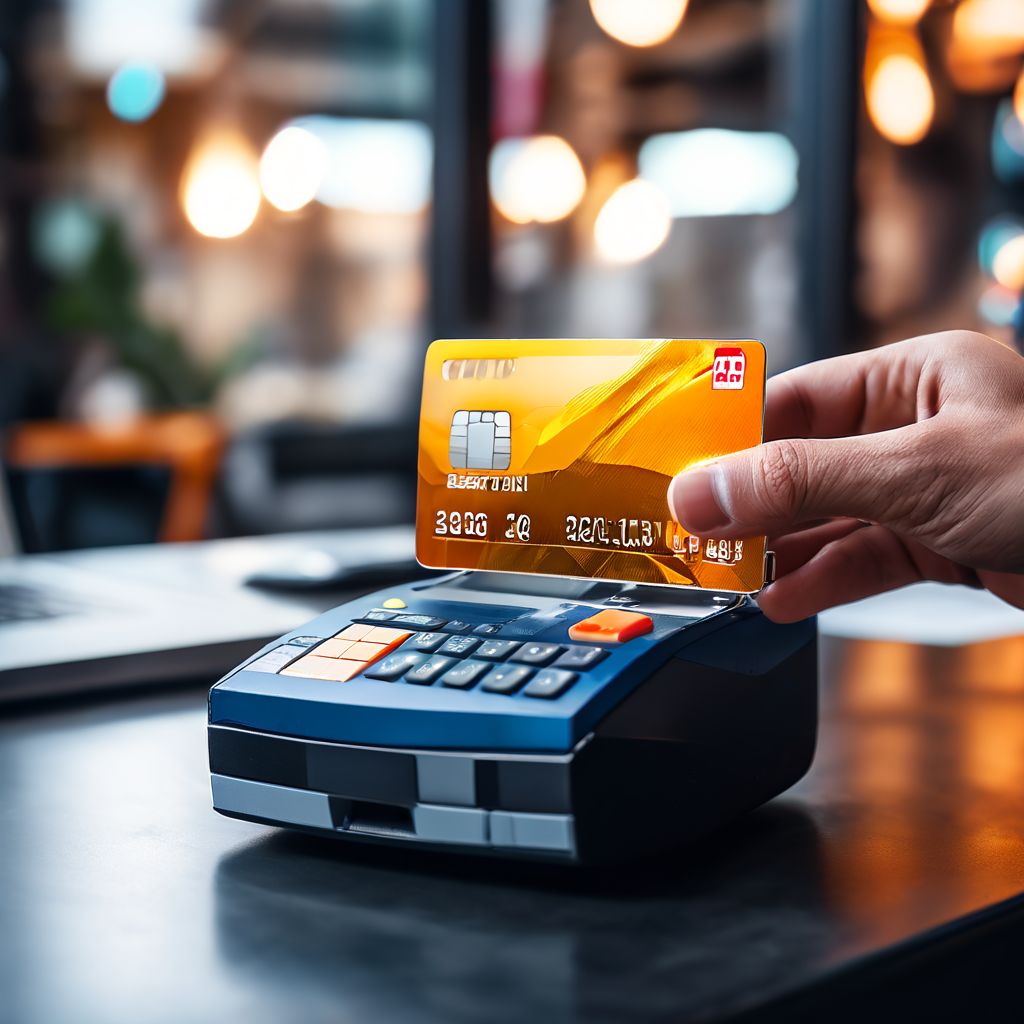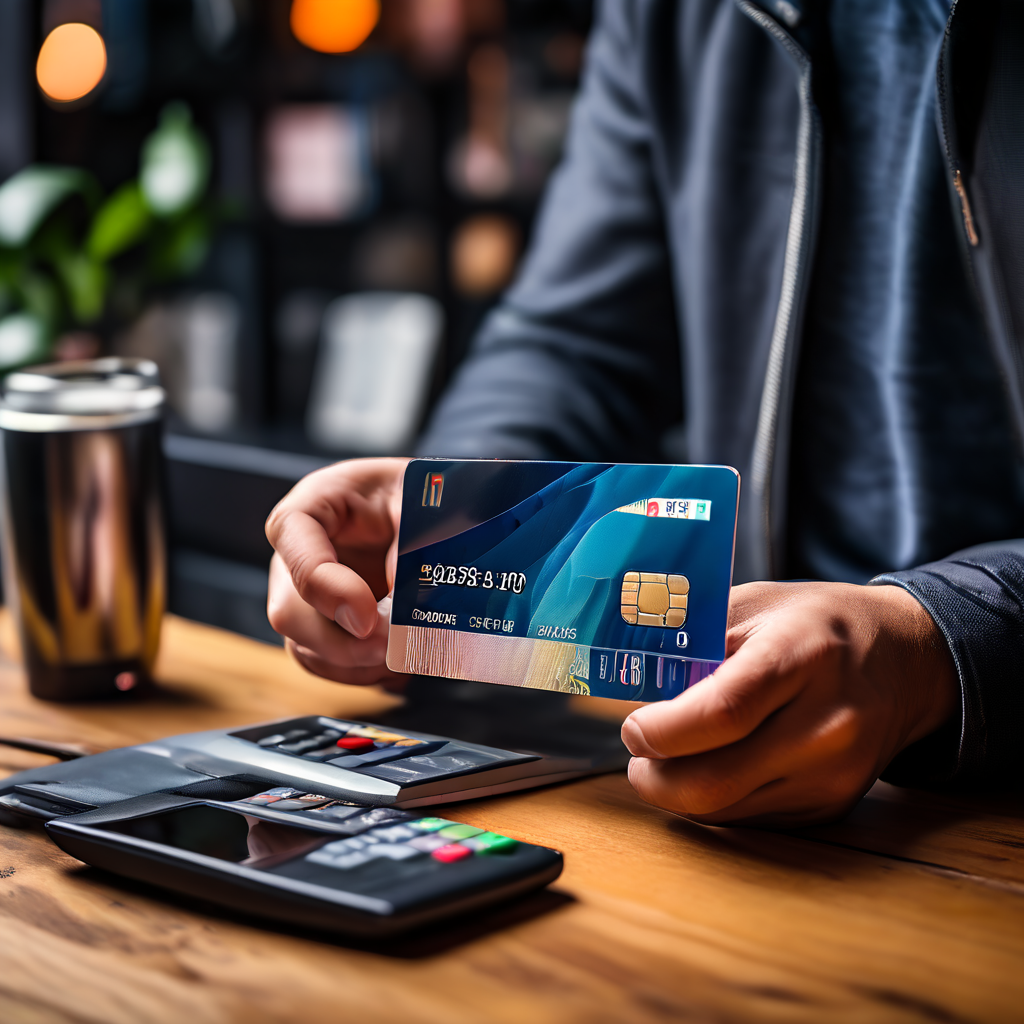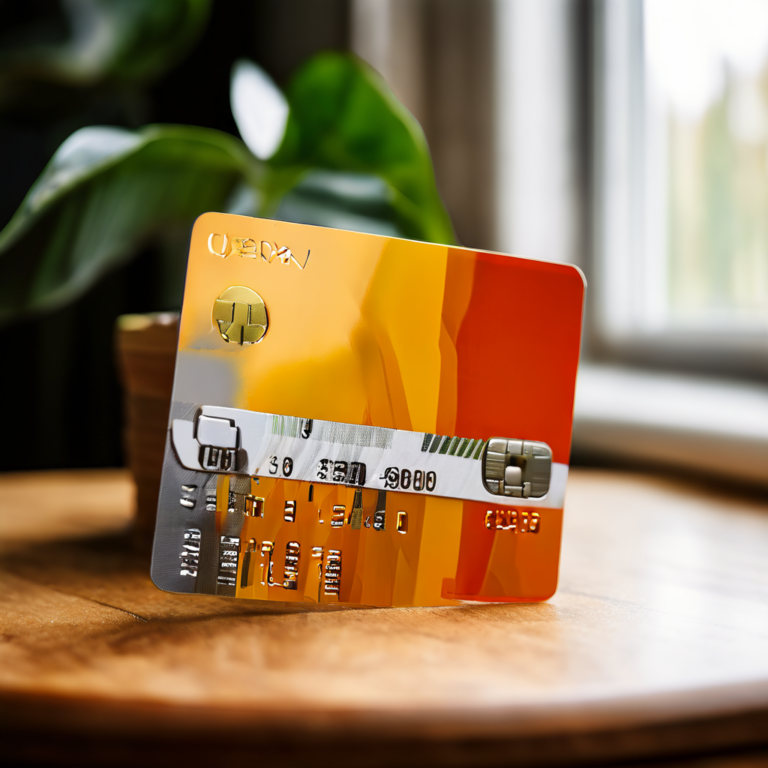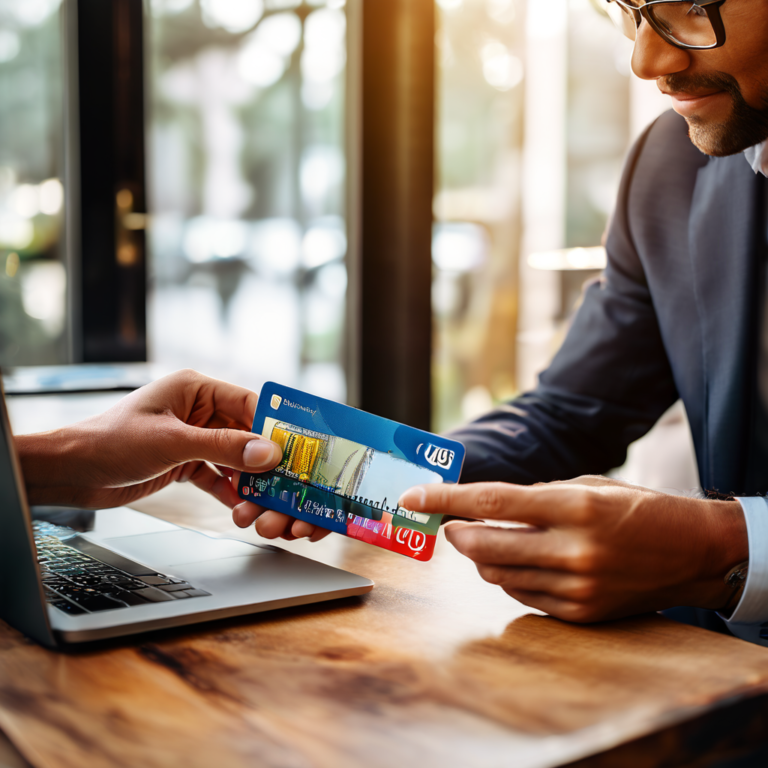How to Spot and Avoid Credit Card Fraud in 2025
Introduction
Credit card fraud continues to evolve as cybercriminals develop more sophisticated tactics. With the rise of digital payments, online shopping, and contactless transactions, fraudsters have more opportunities than ever to steal personal and financial information. Spotting fraudulent activity early and implementing smart security practices can help you protect your credit and finances. In this guide, we’ll explore the latest fraud trends, how to recognize suspicious activity, and the best ways to safeguard yourself against credit card fraud in 2025.
Common Types of Credit Card Fraud in 2025
As digital payments and online shopping continue to grow, so do the sophistication and frequency of credit card fraud schemes. In 2025, cybercriminals are leveraging advanced technology to exploit vulnerabilities in payment systems. Understanding these threats is crucial for protecting yourself from fraud.
Phishing Scams – Deceptive Emails, Texts, and Websites
Phishing remains one of the most prevalent forms of credit card fraud. Fraudsters send emails, SMS messages (smishing), or fake websites that appear legitimate, tricking users into providing credit card details, passwords, and personal information.
🔹 Common Tactics:
✔ Fake emails impersonating banks, asking you to verify account details.
✔ Text messages with urgent warnings about suspicious activity, prompting you to click malicious links.
✔ Bogus customer support calls requesting card details to “resolve an issue.”
🔹 How to Protect Yourself:
✔ Never click on unsolicited links or download attachments from unknown senders.
✔ Verify all communication by directly calling your bank or credit card provider.
✔ Enable multi-factor authentication (MFA) for an extra layer of security.
Card Skimming & Shimming – Stealing Data from Physical Card Readers
Criminals install skimming devices on ATMs, gas station pumps, or point-of-sale (POS) terminals to capture card details when inserted. A newer variation, shimming, targets EMV chip cards by inserting a thin device into the card slot to steal data.
🔹 Common Targets:
✔ ATMs in high-traffic areas.
✔ Gas station payment terminals.
✔ Self-checkout kiosks at retail stores.
🔹 How to Protect Yourself:
✔ Use contactless payment methods whenever possible.
✔ Inspect card readers for loose or unusual attachments before inserting your card.
✔ Enable real-time transaction alerts to detect unauthorized purchases quickly.
Online Fraud & Data Breaches – Hacked Accounts & Stolen Payment Info
Cybercriminals target e-commerce sites, retailers, and payment platforms, stealing credit card details in bulk through hacking attacks and data breaches. In 2025, advanced AI-driven hacking tools have made these breaches more frequent and severe.
🔹 Common Risks:
✔ Stored card details on retailer websites being compromised.
✔ Fake online stores harvesting payment details.
✔ Malware-infected devices capturing keystrokes and login credentials.
🔹 How to Protect Yourself:
✔ Use virtual credit cards or temporary card numbers for online purchases.
✔ Regularly update passwords and avoid reusing them across multiple sites.
✔ Monitor credit card statements and report suspicious activity immediately.
Account Takeover Fraud – Cybercriminals Gaining Access to Your Account
In account takeover (ATO) fraud, criminals gain control of an existing credit card account by stealing login credentials through phishing, malware, or data breaches. Once inside, they change account details, request new cards, and make unauthorized purchases.
🔹 Warning Signs:
✔ Unexpected password reset emails or login alerts from unknown locations.
✔ Unfamiliar transactions appearing on your credit card statement.
✔ Notifications from your bank about changes you didn’t request.
🔹 How to Protect Yourself:
✔ Use strong, unique passwords and update them regularly.
✔ Enable two-factor authentication (2FA) for added security.
✔ Set up real-time fraud alerts to detect unauthorized access.
Synthetic Identity Fraud – Creating Fake Identities Using Stolen Data
Synthetic identity fraud involves criminals combining real and fake personal information to create new identities. They then open fraudulent credit accounts, rack up massive debt, and disappear before creditors realize the fraud.
🔹 How It Works:
✔ Criminals use stolen Social Security numbers (SSNs), birthdates, and addresses to fabricate new identities.
✔ They apply for credit cards, build a fake credit history, and eventually max out the credit limit before vanishing.
✔ Often, victims (especially children and seniors) don’t realize their identity has been used fraudulently for years.
🔹 How to Protect Yourself:
✔ Monitor your credit report regularly for unknown accounts.
✔ Freeze your credit profile if you don’t plan on applying for new credit.
✔ Be cautious when sharing personal information, even with seemingly legitimate sources.
Contactless Payment Fraud – Security Risks with Tap-to-Pay & Digital Wallets
With the widespread adoption of contactless credit cards, mobile wallets (Apple Pay, Google Pay), and NFC technology, fraudsters have developed ways to intercept payment data using RFID skimming or exploiting weak security measures.
🔹 Potential Threats:
✔ Criminals using RFID skimmers to steal tap-to-pay card data in crowded areas.
✔ Hacked digital wallets leading to unauthorized transactions.
✔ Fraudulent “tap-to-pay” purchases made without a physical card.
🔹 How to Protect Yourself:
✔ Use biometric authentication (fingerprint/face recognition) for mobile payments.
✔ Store your cards in an RFID-blocking wallet to prevent skimming.
✔ Regularly review transaction history and dispute any unauthorized charges immediately.
Stay Ahead of Credit Card Fraud in 2025
As technology evolves, so do fraud tactics. To protect yourself from credit card fraud in 2025:
✅ Stay vigilant against phishing scams and suspicious links.
✅ Use contactless payment methods securely with biometric authentication.
✅ Monitor your credit card statements and account activity regularly.
✅ Enable real-time fraud alerts to detect unauthorized transactions quickly.
✅ Report lost or stolen credit cards immediately to your issuer.
By taking proactive steps and staying informed, you can reduce your risk of credit card fraud and keep your finances secure.
How to Spot Credit Card Fraud
Credit card fraud can happen to anyone, but early detection is key to minimizing damage. Criminals use various tactics to steal credit card information, and recognizing the warning signs can help prevent financial loss and identity theft. Here’s how to spot credit card fraud before it spirals out of control.
Unexpected Charges on Your Statement
One of the clearest signs of fraud is unauthorized transactions appearing on your credit card statement. These charges can range from small test transactions to large, unexpected purchases.
🔹 What to Watch For:
✔ Charges from unfamiliar merchants or locations.
✔ Multiple small transactions—fraudsters often test cards with low-value purchases before making larger ones.
✔ Recurring charges from subscriptions you didn’t sign up for.
🔹 How to Protect Yourself:
✔ Review your statements regularly—at least once a week.
✔ Set up real-time transaction alerts to be notified of every purchase.
✔ Report any suspicious transactions to your bank immediately.
Alerts from Your Bank About Suspicious Activity
Banks and credit card issuers monitor accounts for unusual spending patterns and may send fraud alerts if something seems suspicious. If you receive a text, email, or call about a transaction you didn’t make, take it seriously.
🔹 What to Do:
✔ Verify the transaction—if it’s legitimate, confirm with your bank.
✔ If it’s fraud, report it immediately and have the card blocked.
✔ Be wary of phishing scams—fraudsters sometimes send fake alerts to trick you into revealing card details.
Declined Transactions Due to Unauthorized Attempts
If your credit card gets declined for no apparent reason, especially when you have available credit, it could mean someone has tried using it fraudulently. Banks may block a card automatically if they detect suspicious transactions.
🔹 Possible Reasons for a Decline:
✔ Your bank flagged an unusual transaction and temporarily froze the card.
✔ Someone tried to exceed your credit limit with a fraudulent charge.
✔ Multiple failed transactions triggered a security lock on your account.
🔹 What to Do:
✔ Check for fraud alerts from your bank and respond promptly.
✔ Contact your credit card issuer to verify the issue.
✔ If fraud is confirmed, request a new credit card number and update your payment details where necessary.
Receiving Notifications for Account Changes You Didn’t Make
Fraudsters often try to take over accounts by changing important details, such as your billing address, email, phone number, or password. If you receive a notification about an account update you didn’t authorize, it could indicate account takeover fraud.
🔹 Signs of Unauthorized Changes:
✔ Emails confirming a password reset request you didn’t initiate.
✔ Notifications about a new linked device or digital wallet.
✔ Alerts saying your contact information was changed without your approval.
🔹 What to Do:
✔ Act fast—log in to your account and check recent activity.
✔ Change your password immediately and enable two-factor authentication (2FA).
✔ Contact your bank to freeze your account if necessary.
Missing Physical Credit Card or Compromised Digital Wallet
Losing your credit card or noticing unauthorized access to your Apple Pay, Google Pay, or Samsung Pay account is a major red flag. A stolen or misplaced card can be used within minutes if not reported.
🔹 Immediate Actions to Take:
✔ Lock your card using your bank’s mobile app if you suspect it’s lost.
✔ Report the loss to your credit card issuer immediately and request a replacement.
✔ Remove compromised payment methods from digital wallets and reset security settings.
Stay Alert & Take Action Quickly
The sooner you spot and report credit card fraud, the less financial damage you’ll face. Protect yourself by:
✅ Monitoring your statements regularly for suspicious transactions.
✅ Enabling fraud alerts for real-time transaction notifications.
✅ Keeping your contact details updated to receive bank alerts.
✅ Using strong passwords & two-factor authentication for account security.
✅ Freezing or canceling your card immediately if it’s lost or stolen.
By staying vigilant and responding swiftly, you can reduce your risk of fraud and keep your finances secure. 🚀
Best Practices to Avoid Credit Card Fraud
Credit card fraud is evolving with technology, making it essential for consumers to stay vigilant. By following these best practices, you can safeguard your financial information and reduce the risk of becoming a victim.
Monitor Your Statements and Transactions Regularly
One of the easiest ways to detect fraud early is by reviewing your credit card statements and monitoring your account activity. Fraudsters often start with small test charges before making larger unauthorized transactions.
🔹 How to Stay Alert:
✔ Check your transactions weekly through your bank’s website or app.
✔ Set up real-time transaction alerts via SMS or email to track spending.
✔ Review pending transactions for anything unfamiliar.
🔹 What to Do if You Spot Fraud:
✔ Report unauthorized charges immediately to your card issuer.
✔ Request a card replacement if your details have been compromised.
✔ Dispute fraudulent transactions and monitor your credit report.
Use Secure Payment Methods
Enhancing payment security minimizes the risk of fraud, especially for online transactions and contactless payments.
🔹 Smart Payment Security Practices:
✔ Enable two-factor authentication (2FA) for online purchases.
✔ Use virtual card numbers for safer online shopping—many banks provide these temporary, disposable card details.
✔ Set spending limits or lock certain transactions via your credit card app.
Be Cautious with Emails and Phone Calls
Fraudsters often impersonate banks, merchants, or even government agencies in phishing emails or scam phone calls.
🔹 Red Flags to Watch For:
✔ Emails or texts with urgent requests to “verify your account” by clicking a link.
✔ Calls from unknown numbers claiming to be your bank and requesting card details.
✔ Messages asking for your PIN, password, or CVV number—legitimate companies won’t ask for this.
🔹 How to Protect Yourself:
✔ Verify before clicking links—go directly to the company’s website instead.
✔ Never share sensitive information over the phone unless you initiated the call.
✔ Report suspicious emails and calls to your bank or credit card company.
Protect Your Physical Card and Digital Wallet
Losing your physical credit card or having your digital wallet compromised can lead to unauthorized charges.
🔹 Best Practices for Card Safety:
✔ Use RFID-blocking wallets to prevent electronic pickpocketing.
✔ Be cautious with contactless payments—disable tap-to-pay if you don’t use it.
✔ Store your card securely and never share your PIN.
🔹 Protecting Digital Wallets:
✔ Use biometric authentication (Face ID or fingerprint) for added security.
✔ Only link cards to trusted devices and disable unused payment apps.
✔ Monitor digital wallet activity for unauthorized transactions.
Only Shop on Trusted Websites
Online shopping is a common target for fraudsters, especially through fake or compromised websites.
🔹 How to Identify Secure Websites:
✔ Look for HTTPS in the URL—this indicates encryption.
✔ Use trusted retailers and avoid unknown third-party sellers.
✔ Check for secure payment options, such as PayPal or verified checkout systems.
🔹 Avoiding Online Shopping Scams:
✔ Never save your credit card details on unfamiliar websites.
✔ Be cautious of deals that seem too good to be true—they often are.
✔ Use virtual cards or one-time payment options for additional security.
Update Passwords and Enable Security Features
A strong password is your first line of defense against hackers and account takeovers.
🔹 Best Password Practices:
✔ Use unique, complex passwords for your bank and credit accounts.
✔ Enable multi-factor authentication (MFA) wherever possible.
✔ Change passwords regularly, especially if there’s a security breach.
🔹 Extra Security Measures:
✔ Use a password manager to keep track of login credentials.
✔ Set up account recovery options to quickly regain access in case of hacking.
✔ Enable account lock notifications to detect unauthorized login attempts.
FAQs
Q: What are common signs of credit card fraud?
A: Unfamiliar transactions, unexpected declines, or alerts about purchases you didn’t make are signs of fraud.
Q: How can I protect my credit card from fraud?
A: Use strong passwords, enable transaction alerts, avoid using public Wi-Fi for purchases, and never share your card details.
Q: What should I do if I notice a fraudulent charge?
A: Contact your credit card issuer immediately to report the charge and request a card replacement if necessary.
Q: Are contactless payments safer than traditional card swipes?
A: Yes, contactless payments use encryption and tokenization, making them more secure than magnetic stripe transactions.
Q: How can I spot phishing scams related to my credit card?
A: Be cautious of emails or texts asking for personal or card information. Always verify directly with your bank before responding.
Q: Should I check my credit report for fraud?
A: Yes, reviewing your credit report regularly helps detect unauthorized accounts or suspicious activity early.
Conclusion
As technology advances, so do the tactics used by credit card fraudsters. By staying vigilant, monitoring your accounts, and using secure payment methods, you can significantly reduce your risk of becoming a victim. Remember to review your statements regularly, enable security features, and be cautious with online transactions. If fraud ever occurs, act quickly to minimize damage and protect your financial well-being. Awareness and proactive measures are your best defense against credit card fraud in 2025 and beyond.






